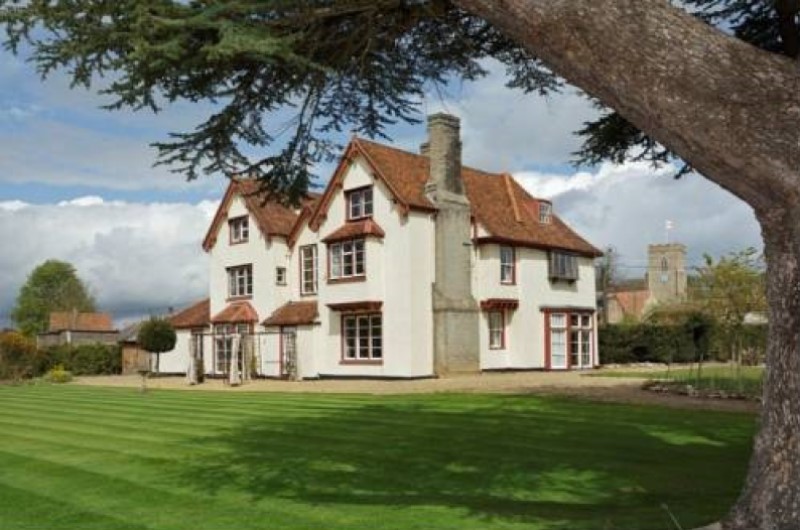Featured Image: View of the Great Churchyard looking west, the Chapel of the Charnel ruins are on the right, St Mary’s Church to the left.
We have recently welcomed Louisa to the SCCAS team, so we asked her to share with us her favourite archaeological site in Suffolk.
Louisa has a background in commercial archaeology and is a specialist in human osteology. In her new role as Archaeological Officer (Planning/HER), Louisa is updating and maintaining the Suffolk Historic Environment Record, as well as providing archaeological advice in relation to the planning process and monitoring commercial archaeological investigations.
One of my favourite sites in Suffolk is The Great Churchyard in Bury St Edmunds. As an osteologist, I have a keen interest in burial practices and enjoy exploring old churchyards. This churchyard is a prominent feature in the centre of Bury St Edmunds, situated adjacent to St James’ Cathedral, St Edmund’s Abbey Ruins and St Mary’s Church.
The Great Churchyard was part of the Abbey of St Edmundsbury and although its exact date of origin is unknown it is likely to have been created in the time of Abbot Anselm (AD 1120-48). The earliest mention of a cemetery in this area is AD 1197.
Following the dissolution of the Abbey in AD 1539, the site passed through a succession of secular owners and the freehold of the Great Churchyard was separated from the rest of the Abbey precinct. In 1798, it was bought by the town corporation and was closed for burials in the mid-19th century.
Today, the churchyard is a well-used walking route and for me it became my outdoor escape during the Covid lockdowns. Cemeteries became popular walking spots in the Victorian period, particularly in London with the creation of garden cemeteries on the outskirts of the city such as Highgate and Kensal Green cemeteries. Whilst The Great Churchyard cannot boast tombs as ostentatious as those in larger cemeteries, there are still plenty of ornate examples and the planting of the lime tree avenues in the 18th and 19th centuries created distinct walking routes.
An image by Suffolk artist John Kendall depicts a family in their finery out for a walk through the churchyard, a scene that would be typical of the time. In the early 18th century two public houses backed onto the churchyard which was by that time widely used for public recreation and promenading.

There are hundreds of burial monuments still visible today within the churchyard, with the earliest dating from AD 1637. However, these represent a fraction of the burials present, as the monuments have been thinned over the years to reduce crowding. The triangular grass area adjacent to the cathedral was once crammed with grave markers which were removed in the 1950s.
The remaining monuments take a variety of forms, from standard tombstones to more ornate pedestal and chest tombs. Many bare the classic memento mori motif of skulls and hourglasses symbolising death.



The largest monument within the graveyard is the ruins of the Chapel of the Charnel, which was the former Charnel House for the Abbey. The ruins are of 13th century date and are Grade I listed and a Scheduled Monument. A charnel house was used to store human skeletal remains unearthed when digging graves as churchyards frequently reached capacity. It was common practice for older burials to be removed to allow new interments. Today, there are a number of later memorials of 18th and 19th century date which have been set into the walls of the ruins.
Find Out More:
Details of listed memorials in the great churchyard can be seen on Suffolk Heritage Explorer
Details on the Abbey Gardens and Precincts (including the Great Churchyard) can be found on Historic England’s website.





